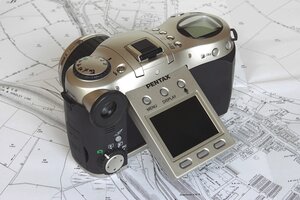Shooting Water - Shutter Speed
Thank you for putting this together Bill.
Best regards
Nigel
I loved the article along with the accompanying images (some of which you have posted on here before). And thank you for the extra info here. Just a minor technical correction though; hydrogen has the positive charge and oxygen the negative.
Best
My outfit: K1ii - Pentax D FA 24-70mm f2.8 - Pentax DA* 300mm f4 - Pentax modified DA* 60-250mm f4 - Irix 15mm Firefly - Pentax FA 35mm - FA 50mm f1.4 - Tamron SP 90mm macro - Pentax AF 540 FGZ II
Welsh Photographer
Flickr
My PPG
Foundation NFT
I'm a fan of the traditional 24fps film frame rate for a very similar perspective, in terms of the resulting motion seems normal to how I see the subject matter.
That usually (rule of thumb style) results in a series of 1/48s still images.
I also like the illustration of how you can slow things down too far if you are not careful, into a fog of blurry light. I like a combo with some areas of violent motion highlighted etc.
All great stuff, thanks.
I was particularly interested to read your hints on using the 55-300mm lens for this type of work, which is something I wholeheartedly agree with. I've also used my 50-135 and 100WR macro for similar reasons, to isolate the parts of interest and exclude any distractions.
Great stuff, please keep posting your wonderful images and articles.
Regards
David
Thank you for sharing this super article, i've learned a lot!
+1. 👍
Add Comment
To leave a comment - Log in to Pentax User or create a new account.







1344 posts
12 years
The article was originally intended for the Pentax Portal on Ephotozine, which seems to have disappeared recently, so the article is now on Ephotozine as part of their “Technique” section. It's also been posted here (Ephotozine being a sister company, I guess), which I'm delighted about. Anyway, have a read, and see what you think...
One of the many things I didn't get a chance to talk about in the article, but talked about at length in the presentation, was shutter speed, and the effect it has on how water “looks”, particularly wrt photography. I thought it might be useful to do so here, as it's a subject I've noticed come up a lot, and it seems to be much discussed...
So. I'm not a scientist but... an interesting place to start (bear with me, it's relevant, I promise) is with molecular structure. Water is very “sticky”. It's attracted to itself. H2O, ie 2 hydrogen atoms, attached to one oxygen atom. The oxygen atom has a slightly positive charge, the hydrogen atoms a slightly negative charge. This is what makes it “sticky”, and attracted to other water molecules. Importantly, water molecules are much more attracted to other water molecules than they are to air (think of rain drops as they fall). So, when gravity and momentum get involved, and water molecules get parted, they try and cling on to each other for as long as they can, before trying to reform at the first given opportunity.
This is essentially what fast moving water is. Water molecules desperately trying to cling to each other, as other forces try to rip them apart. You can begin to see this if you look closely at a shot taken at 1/2000 or 1/1000 of a second.
What's interesting is that this is of course not at all what the eye sees. Because the eye, in terms of “shutter speed” doesn't work at anything like that velocity. It also has a kind of a decay thing going on that means there's some kind of residual image left on the retina, particularly noticeable with fast moving things (hence the no. of frames per sec you can get away with on Film/TV etc.). I've researched this pretty hard and the “best guess” I can find in terms of the equivalent “shutter speed” at which the eye sees is from Ken Rockwell, who reckons it's about 1/30th sec (he's also researched it pretty hard).
We're starting to get somewhere. The eye sees fast moving anything (water included) as a bit of a blur. But here's the paradox... A shot of fast moving water taken on a camera at 1/30th of a second is no more accurate a depiction of what the water is ACTUALLY doing (billions of molecules desperately clinging to each other, being broken up, getting back together again), than say 2 secs or 1/100th of a sec. It might be a closeish approximation to what the human eye sees, but it's a fair distance removed from what is actually happening. If you wanted to take accurate photos of moving water, my guess would be you'd need to be at 1/5000th of a sec and beyond. Which would show you what the molecules were doing. But totally remove the sense of motion (as well as many many other things) that you as a human feel by actually looking at it. So how accurate would that really be?
I suppose my point is this. I talk a lot in the article about the importance of how things “feel” vs what they are. Ultimately, any photograph of anything is a point of view. With water, we're taking a 2 dimensional still image of a 3 dimensional moving thing. So even at an objective, purely rational, level there can be no “right” shutter speed, because ANY shutter speed you choose is an opinion (molecular structure vs perceived movement), and therefore to a greater or lesser extent, factually incorrect, or at least incomplete. At the end of the day, it's simply about personal taste.
For what it's worth, with fast moving water (streams, waterfalls etc.) I currently find myself taking quite a few shots in the 1/10th to ¼ sec territory. Not always, but quite often. I like the combination of structure vs movement. No doubt it will change. As I say in the article, the differences in terms of even 1/6th to 1/8th of a sec on any given stretch of water can be considerable. I do, though, take plenty of shots that are, either side, way outside that ballpark. There are also a number of other variables that will impact on and influence that choice: speed of flow of the water, how close the camera is to it, the focal length of the lens, and importantly exactly what it is the photographer's trying to say/achieve at any given time...
I thought it might help if I posted some shots of a fast-ish moving stretch of water on the River Wharfe in the Yorkshire Dales, which hopefully should go some way illustrate the above (nb I came across Ken Rockwell's thoughts after I'd taken these, so annoyingly I haven't got one at 1/30th sec, but 1/20th is pretty close).
Anyway, there we go... a cross section of opinions/interpretations of what the water is doing... all of them in my opinion valid (although I'll have my favourites, as I'm sure you will too), in their own way. Just depends on your point of view, I guess, and whatever it is that you happen to be trying to achieve at the time...
BillWardPhotography
Instagram
Facebook